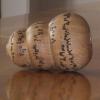Articles
Andy Murray and Laura Robson made a good team at London 2012, bringing home silver in the mixed doubles. But how do you make sure that the competing pair is the best you can pick from the team?
London 2012 vowed to be the cleanest Olympics ever, with more than 6,000 tests on athletes for performance enhancing drugs. But when an athlete does fail a drug test can we really conclude that they are cheating? John Haigh does the maths.
In the 1920s the Austrian physicist Erwin Schrödinger came up with what has become the central equation of quantum mechanics. It tells you all there is to know about a quantum physical system and it also predicts famous quantum weirdnesses such as superposition and quantum entanglement. In this, the first article of a three-part series, we introduce Schrödinger's equation and put it in its historical context.
Predicting the final Olympic medal count is a black art. Sport, with all its intricacies and vagaries, is always susceptible to variations in form, weather conditions and simple random events. But we like a challenge! So without further ado, here is our predicted 2012 London Olympic medal count.
In our article Mapping the medals we came up with our very own prediction of the 2012 Olympic medal counts for the top 20 countries! This interactive map tells you how our predictions stack up: click on a country to see its actual medal count, our prediction and the results from 2008.
On the face of it, an artist and a theoretical physicist might seem an unlikely pairing. But Turner Prize-winning sculptor Grenville Davey and string theorist David Berman's collaboration is producing beautiful, thought-provoking work inspired by the fundamental structure of the Universe. Julia Hawkins interviewed them to find out more about how the Higgs boson and T-duality are giving rise to art.
Few things in nature are as dramatic, and potentially dangerous, as ocean waves. The impact they have on our daily lives extends from shipping to the role they play in driving the global climate. From a theoretical viewpoint water waves pose rich challenges: solutions to the equations that describe fluid motion are elusive, and whether they even exist in the most general case is one of the hardest unanswered questions in mathematics.
When the mathematician AK Erlang first used probability theory to model telephone networks in the early twentieth century he could hardly have imagined that the science he founded would one day help solve a most pressing global
problem: how to wean ourselves off fossil fuels and switch to renewable energy sources.
